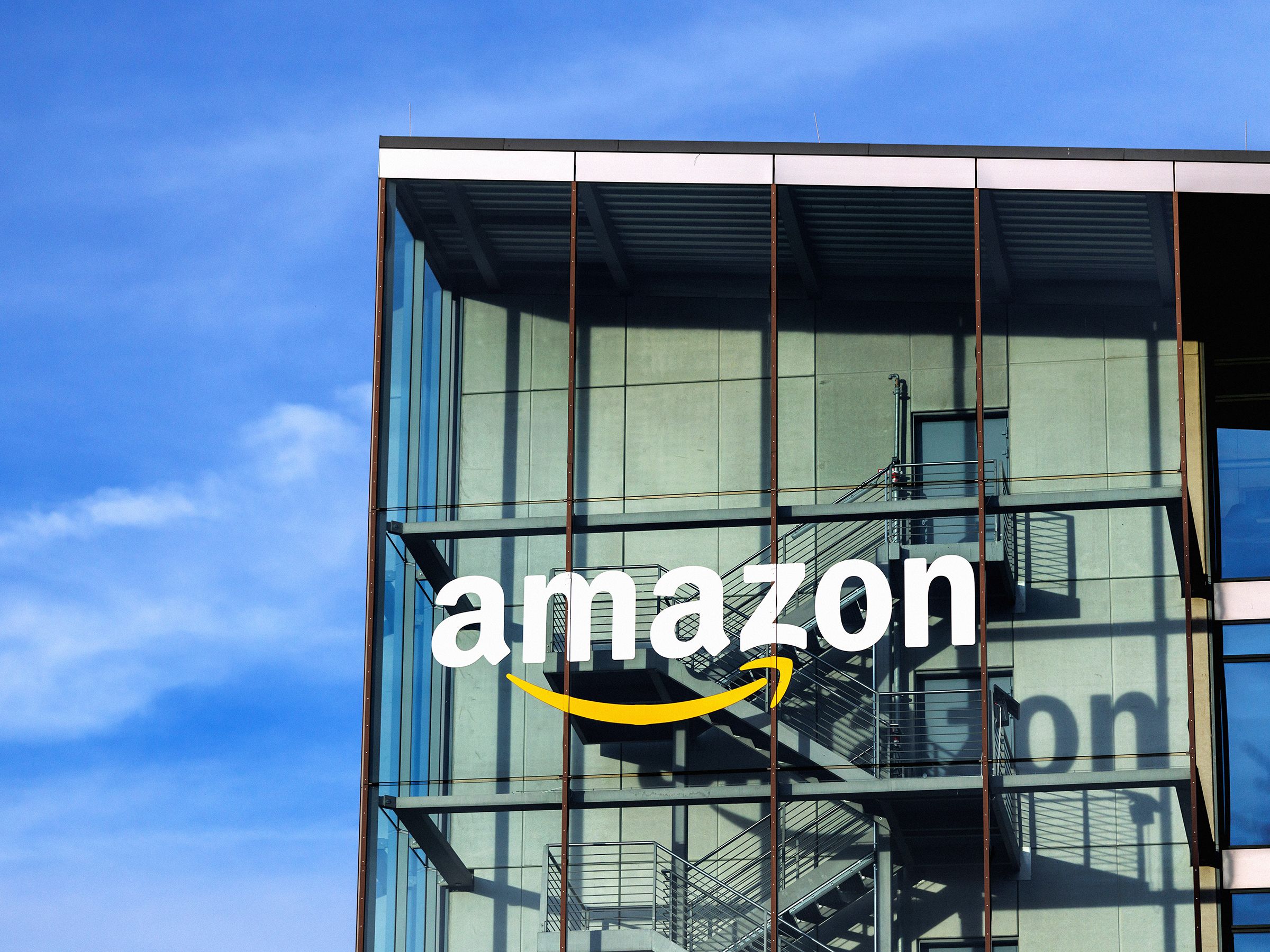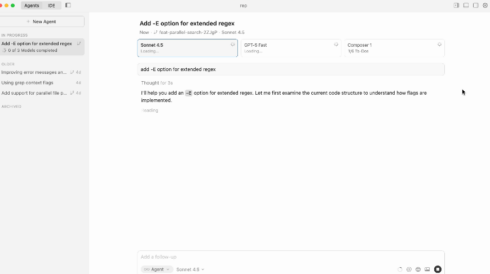The $38 Billion Handshake: How OpenAI and Amazon’s Landmark Deal is Reshaping the AI Landscape
In a move that sends powerful ripples through the technology sector, OpenAI has entered into a monumental, multi-year agreement with Amazon, committing a staggering $38 billion to utilize its Amazon Web Services (AWS) cloud infrastructure. This isn’t merely a business transaction; it’s a profound statement about the future of artificial intelligence, the colossal scale of resources required to build it, and the intricate dance of competition and collaboration among the world’s most powerful tech giants.
This landmark deal is designed to fuel the next generation of OpenAI’s ambitious projects, providing the immense computational power necessary for training its increasingly sophisticated models and serving its millions of users worldwide. Yet, the implications extend far beyond a simple procurement of computing resources. The agreement highlights the rapidly intensifying arms race for AI dominance, deepens the complex web of industry partnerships, and adds fuel to the fiery debate over a potential AI bubble. As billions flow into the foundational layers of AI, this partnership between a pioneering AI lab and a cloud computing titan offers a clear glimpse into the architecture of our technological future.

A Partnership of Unprecedented Scale
The $38 billion figure is breathtaking, representing one of the largest cloud computing deals ever signed. This investment is earmarked for the raw power needed to push the boundaries of what artificial intelligence can achieve. In the words of OpenAI cofounder and CEO Sam Altman, the core motivation is clear: “Scaling frontier AI requires massive, reliable compute.” This statement cuts to the heart of the modern AI challenge—it’s no longer just about brilliant algorithms, but about securing access to an almost unimaginable amount of processing power.
To meet OpenAI’s needs, Amazon is not simply renting out existing server space. Instead, AWS is constructing a bespoke, custom-built infrastructure tailored specifically for OpenAI’s demanding workloads. This high-performance environment is engineered to handle both the training of future AI models—a process that involves feeding them trillions of data points—and inference, which is the real-time processing of user queries that powers applications like ChatGPT.
The technical specifications of this custom infrastructure underscore the sheer scale of the operation:
- Cutting-Edge Hardware: The setup will be built around two of Nvidia’s most powerful chips, the GB200 and GB300 Grace Blackwell Superchips, which are designed explicitly for large-scale AI and high-performance computing.
- Massive GPU Access: The agreement provides OpenAI with access to “hundreds of thousands of state-of-the-art NVIDIA GPUs.” Graphics Processing Units (GPUs) are the workhorses of AI, capable of performing the parallel computations necessary for deep learning at speeds far exceeding traditional processors.
- Future-Proof Scalability: Looking ahead, the infrastructure is designed to expand dramatically. Amazon has stated the deal includes the capacity to scale up to “tens of millions of CPUs” to handle the next frontier of AI development: agentic workloads.
This level of investment and custom engineering demonstrates a shared belief that the demand for AI computation is not just growing, but exploding. It’s a long-term bet that the capabilities unlocked by this power will create value far exceeding the initial $38 billion cost.
The Tangled Web of AI Alliances and Rivalries
The OpenAI-Amazon deal is particularly fascinating because it unfolds against a backdrop of fierce competition and complex, overlapping alliances. It disrupts the simple narrative of tech-giant rivalries, revealing a more pragmatic and multi-layered strategy at play. For years, OpenAI’s rise has been inextricably linked to its deep partnership with Microsoft, Amazon’s primary competitor in the cloud market. Microsoft has invested billions into OpenAI and deeply integrated its models into the Azure cloud platform. This new AWS deal, therefore, appears to be a strategic masterstroke of diversification for OpenAI.
Patrick Moorhead, chief analyst at Moor Insights & Strategy, observes that OpenAI is deliberately avoiding dependence on any single provider. “OpenAI is deploying with pretty much everybody at this point,” he notes. By spreading its massive computational needs across multiple cloud giants, including Microsoft Azure, Google Cloud, Oracle, and now AWS, OpenAI secures its supply chain, gains leverage in negotiations, and ensures operational resilience. If one provider faces technical issues or capacity constraints, OpenAI’s operations can continue unabated on another.
The deal is equally strategic for Amazon. The company is a major financial backer of Anthropic, one of OpenAI’s most significant competitors. By securing a $38 billion deal with OpenAI, Amazon is playing both sides of the field. It signals that AWS aims to be the foundational, indispensable infrastructure layer for the entire AI revolution, regardless of which company develops the winning models. For Amazon, this is a monumental win, silencing critics who suggested the company was lagging in the AI race. As Moorhead puts it, “Many people said they were down and out, but they just put $38 billion up on the board, right, which is pretty exceptional.”
This intricate network of investments and partnerships reveals the true nature of the current AI landscape, where direct competitors are also crucial partners.
| Tech Giant | Primary AI Model Investment | Key Cloud Partnership | Strategic Angle |
|---|---|---|---|
| Microsoft | OpenAI (Exclusive Partner) | OpenAI (on Azure) | Deep integration of OpenAI models into its entire product ecosystem (Azure, Windows, Office 365). |
| Amazon | Anthropic (Major Investor) | OpenAI (on AWS) | Aims to be the universal cloud provider for all major AI players, monetizing the infrastructure race itself. |
| Google DeepMind (In-house) | Anthropic (on Google Cloud) | Develops its own frontier models (Gemini) while also attracting key AI startups to its cloud platform. | |
| OpenAI | N/A (Is the AI Lab) | Microsoft, Amazon, Google, Oracle | Pursues a multi-cloud strategy to ensure access to compute, avoid vendor lock-in, and maintain operational flexibility. |
This table illustrates that the lines are not clearly drawn. The goal for cloud providers is to host the most significant workloads, while the goal for AI labs is to secure the most powerful and reliable computation, leading to these fascinating and complex multi-billion-dollar deals that cut across traditional competitive boundaries.
Fueling the Future: Agentic AI and the Quest for Compute
The immense scale of the AWS deal is not just about making existing AI models like ChatGPT faster or slightly more capable. It is about paving the way for the next paradigm in artificial intelligence: agentic AI. The mention of scaling to “tens of millions of CPUs to rapidly scale agentic workloads” is a critical clue to OpenAI’s long-term vision.
So, what is agentic AI? Unlike current AI models that primarily react to user prompts, an AI agent can proactively take actions to achieve a complex goal. It can break down a high-level objective into smaller, executable steps, use tools (like browsing the web or accessing applications), and work autonomously over an extended period to complete a task.
Imagine this: Instead of asking a chatbot to “list the best flights to Tokyo,” you could instruct an AI agent to “plan and book my entire one-week trip to Tokyo for next month, keeping the budget under $3,000, prioritizing cultural experiences, and handling all flight, hotel, and activity reservations.”
The agent would then:
- Research flight options and cross-reference them with your calendar.
- Find hotels in neighborhoods that match your stated preferences.
- Create a potential itinerary of cultural sites and book tickets.
- Present you with a complete, booked plan for final approval.
This level of autonomy requires a fundamentally different and more intensive form of computation. While GPUs are excellent for the pattern recognition of model training, CPUs are vital for the logical, sequential processing required for an agent to reason, plan, and execute tasks. The deal’s provision for tens of millions of CPUs is a direct investment in building a future where AI assistants become proactive collaborators rather than passive tools. OpenAI and Amazon are betting that as users adopt these powerful AI agents to navigate their digital and physical lives, the demand for this kind of computational power will become virtually limitless.
The Bubble Question: Is the AI Gold Rush Sustainable?
Such colossal spending inevitably raises concerns about an economic bubble. The figures are staggering, and the rush to build infrastructure is frenetic. Between 2026 and 2027 alone, companies are projected to pour astonishing amounts of capital into AI systems.
According to financial analysis, upwards of $500 billion is projected to be spent on AI infrastructure in the US alone during this two-year period.
This level of expenditure, often by companies whose AI products are still in the early stages of monetization, has drawn comparisons to the dot-com bubble of the late 1990s. The argument from skeptics is that the current spending spree is driven more by hype and the fear of missing out than by a clear, sustainable business model. They worry that if the promised returns from AI don’t materialize quickly enough, the market could face a painful correction.
However, proponents argue that this comparison is flawed. They see the current investment not as speculative froth, but as the foundational build-out of a new technological era, akin to the construction of the electrical grid or the fiber-optic cables that power the internet. From this perspective, the companies involved—OpenAI, Amazon, Microsoft, Google—are not just chasing a trend; they are building the essential infrastructure for the next century of innovation. They have a clear line of sight, they argue, on how to convert this massive investment in compute into tangible products, services, and ultimately, profit.
OpenAI’s recent corporate restructuring further supports this view. The company recently transitioned to a new for-profit structure, moving from a “capped-profit” model to a public-benefit corporation still controlled by its nonprofit parent. This change was explicitly designed to allow OpenAI to raise the vast amounts of capital necessary to fund these multi-billion-dollar infrastructure deals. It is a clear signal that the company understands the astronomical costs of competing at the frontier of AI and is preparing its financial architecture accordingly.
The Industry-Wide Impact
The shockwaves from this deal will be felt across the technology landscape, fundamentally altering the dynamics for all major players.
- For Amazon: This is a monumental victory. It firmly establishes AWS as a premier destination for elite AI development and deals a strategic blow to Microsoft Azure’s perceived dominance in the space. By proving its ability to win the business of its rival’s flagship partner, Amazon has demonstrated that its infrastructure is world-class and that it intends to compete fiercely for every major AI workload.
- For OpenAI: The deal is a crucial step toward securing its future. It guarantees access to the raw power needed for its ambitious research and development roadmap, from developing GPT-5 and beyond to realizing its vision for agentic AI. More importantly, it provides critical strategic independence, reducing its reliance on any single partner and strengthening its position at the center of the AI ecosystem.
- For the Industry: This partnership accelerates the trend of consolidation. Building and training frontier AI models is now so astronomically expensive that it is largely beyond the reach of all but a handful of hyper-capitalized companies and their cloud partners. This raises the barrier to entry for new startups and intensifies the competitive pressure on the existing tech titans. The race for artificial general intelligence is becoming a game played by giants.
Ultimately, for consumers and businesses, this unseen infrastructural arms race is what will enable the next wave of transformative AI tools. The billions being invested in data centers, custom silicon, and cloud capacity are the foundation upon which future AI-powered software, intelligent personal assistants, and automated services will be built. The $38 billion handshake between OpenAI and Amazon is more than just a deal; it is a down payment on a future deeply intertwined with artificial intelligence.








Comments